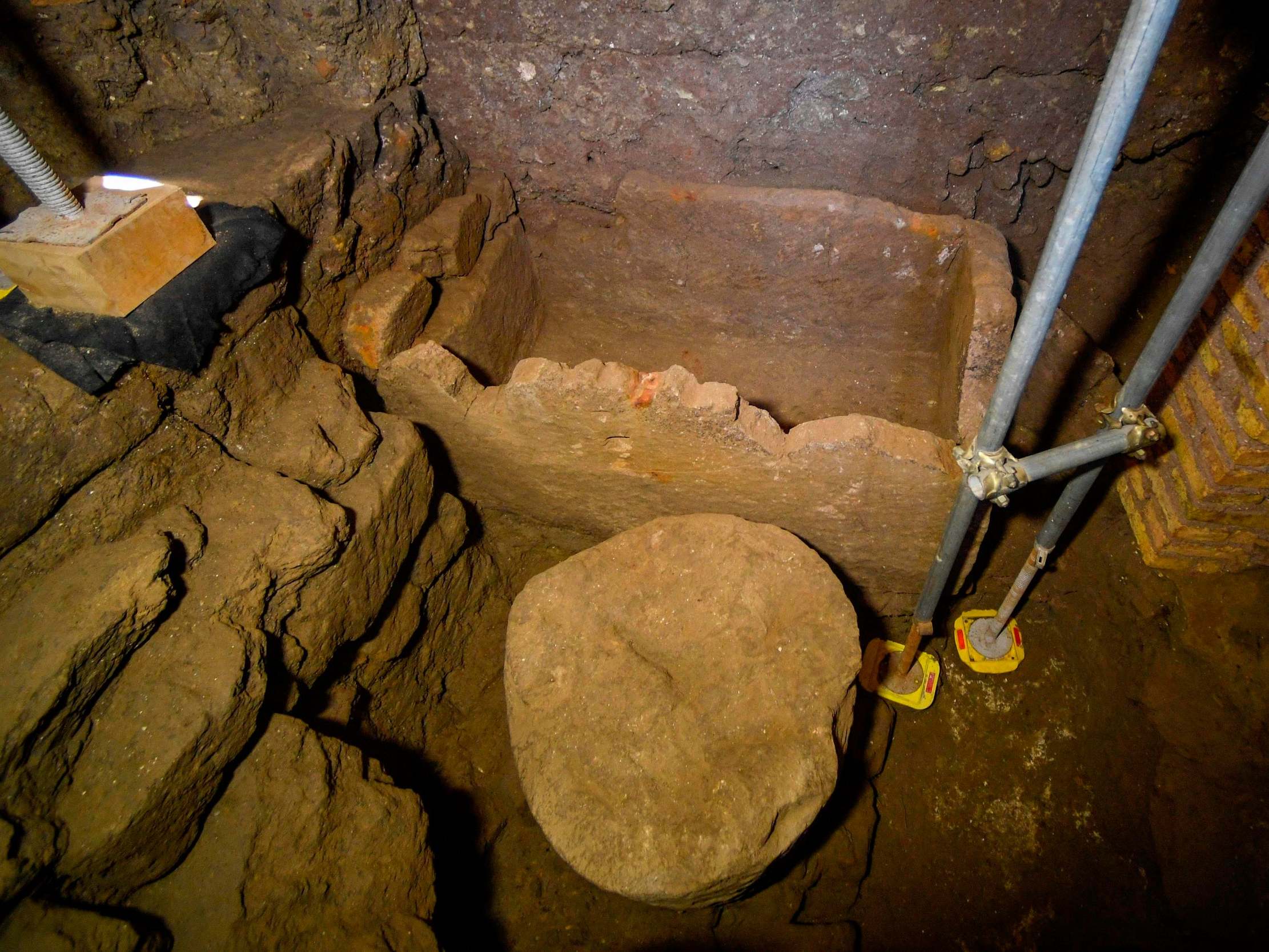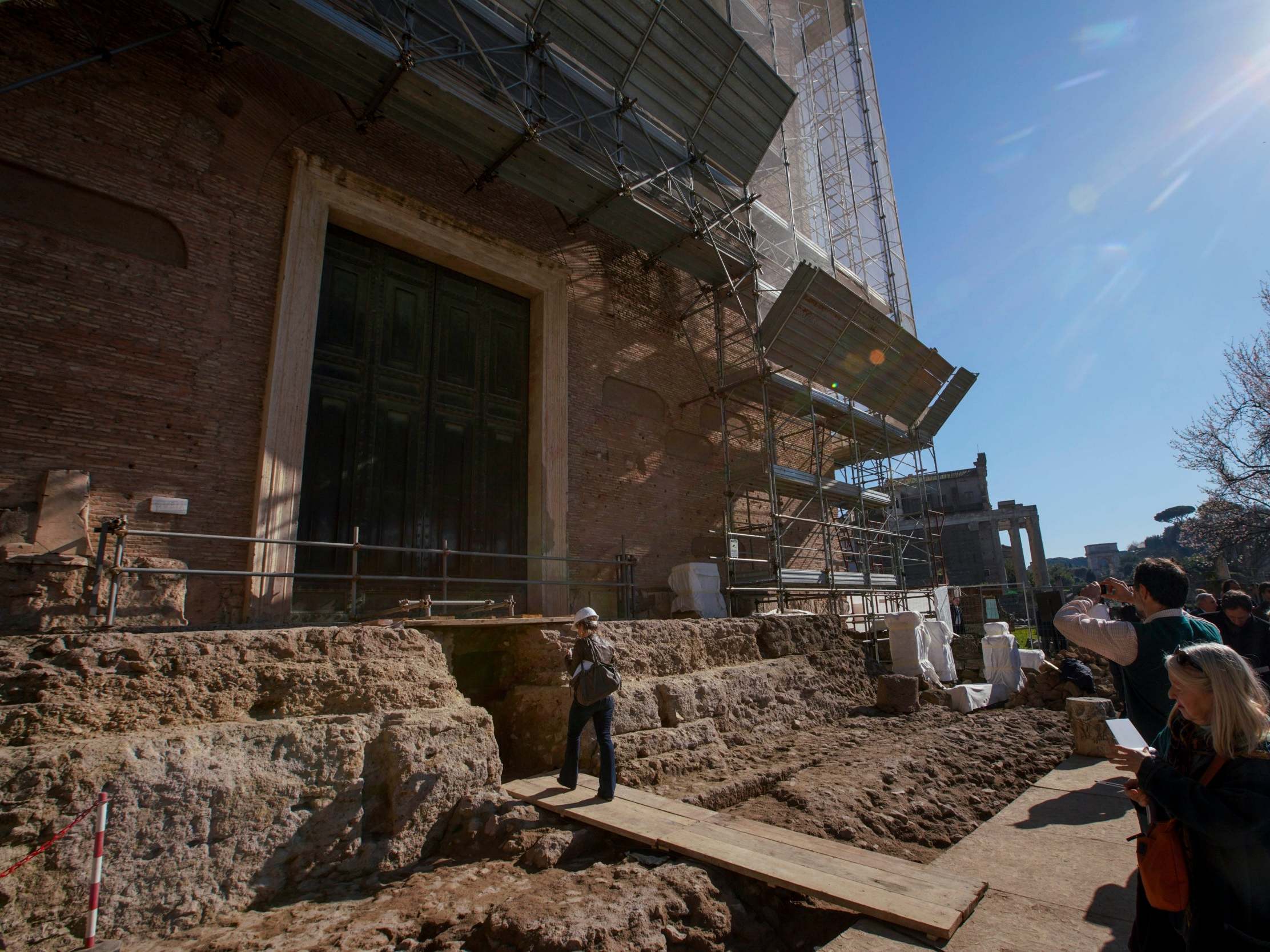Archaeologists discover possible ancient ‘shrine’ to Rome’s legendary founding father
2,600-year-old objects discovered in forgotten underground chamber in Roman Forum

Your support helps us to tell the story
From reproductive rights to climate change to Big Tech, The Independent is on the ground when the story is developing. Whether it's investigating the financials of Elon Musk's pro-Trump PAC or producing our latest documentary, 'The A Word', which shines a light on the American women fighting for reproductive rights, we know how important it is to parse out the facts from the messaging.
At such a critical moment in US history, we need reporters on the ground. Your donation allows us to keep sending journalists to speak to both sides of the story.
The Independent is trusted by Americans across the entire political spectrum. And unlike many other quality news outlets, we choose not to lock Americans out of our reporting and analysis with paywalls. We believe quality journalism should be available to everyone, paid for by those who can afford it.
Your support makes all the difference.Italian archaeologists have discovered what they say could be a lost, millennia-old shrine dedicated to Rome’s fabled founding father Romulus.
Excavations in the Roman Forum, in a chamber beneath the ancient senate house, have unearthed two objects that, while humble in appearance, may have been of great historical significance.
The first resembles a washtub, which excavators believe is a sarcophagus or coffin. The other is a cylindrical stone block thought to be the partial remains of an altar.
The recently excavated area “represents a place, which in history and in the Roman imagination, speaks about the cult of Romulus”, said archaeologist Patrizia Fortini.
As the legend goes, Romulus and his twin Remus – born to the god of war and daughter of a neighbouring city’s deposed king – were ordered to be thrown into the Tiber river by the new king, but were instead abandoned by its banks and rescued by a wolf, who suckled them until they were found by a shepherd.
After restoring their grandfather to the throne, they set out to build their own city, but a disagreement about which of Rome’s seven hills to build upon saw a rift appear between them.
Romulus claimed to have won via divine approval, building upon Palatine Hill and becoming the city’s first king circa 753 BC. Romulus later murdered his brother in a dispute.
While Rome’s origin story is heavily disputed, some ancient sources claimed Romulus was buried in the area of the find. The sarcophagus likely dates to some 200 years after the twins’ time.
It is not known even "whether Romulus physically existed” the way he was described in legends, Ms Fortini said, adding that nobody is hypothesising the sarcophagus ever actually contained Romulus’ remains.
Alfonsina Russo, the archaeologist in charge of the site, noted that according to some ancient traditions Romulus was killed and chopped to pieces, or ascended into heaven.
“Therefore, this cannot be his tomb, but it is very likely, we believe, that this is a memorial site, a cenotaph,” Ms Russo added.
Curiously, it is the second time the sarcophagus and cylindrical stone stub have been unearthed, but it is only now that archaeologists are deeming them important.
In 1899, an Italian archaeologist, Giacomo Boni, was the first to systematically excavate the area.
In his writings, he described finding the cylindrical stone and “a rectangular, tub-shaped crate in tuff” – a rock out of which both objects are made, carved from the Capitoline Hill.

Boni attributed no particular importance to his finds, and in the 1930s, during the regime of dictator Benito Mussolini, a monumental staircase to the senate house – called the Curia Julia – was built over the site.
“We thought it would have been destroyed," Ms Russo said.
But Fortini’s intuition told her that what Boni had found was likely a shrine to Romulus, since the area is one associated with the origins of Rome, and she sought to excavate there. Another crucial clue for where to dig was the close proximity of a black marble shrine called the Lapis Niger.
One of the oldest relics in the Forum, the Lapis Niger was long believed by some Romans to mark either Romulus’ grave, or the spot where some claimed he was murdered by the senate.
While excavations continue, authorities hope the public will be able to stroll underground to view the discovery by 2022.
Additional reporting by agencies
Join our commenting forum
Join thought-provoking conversations, follow other Independent readers and see their replies
Comments